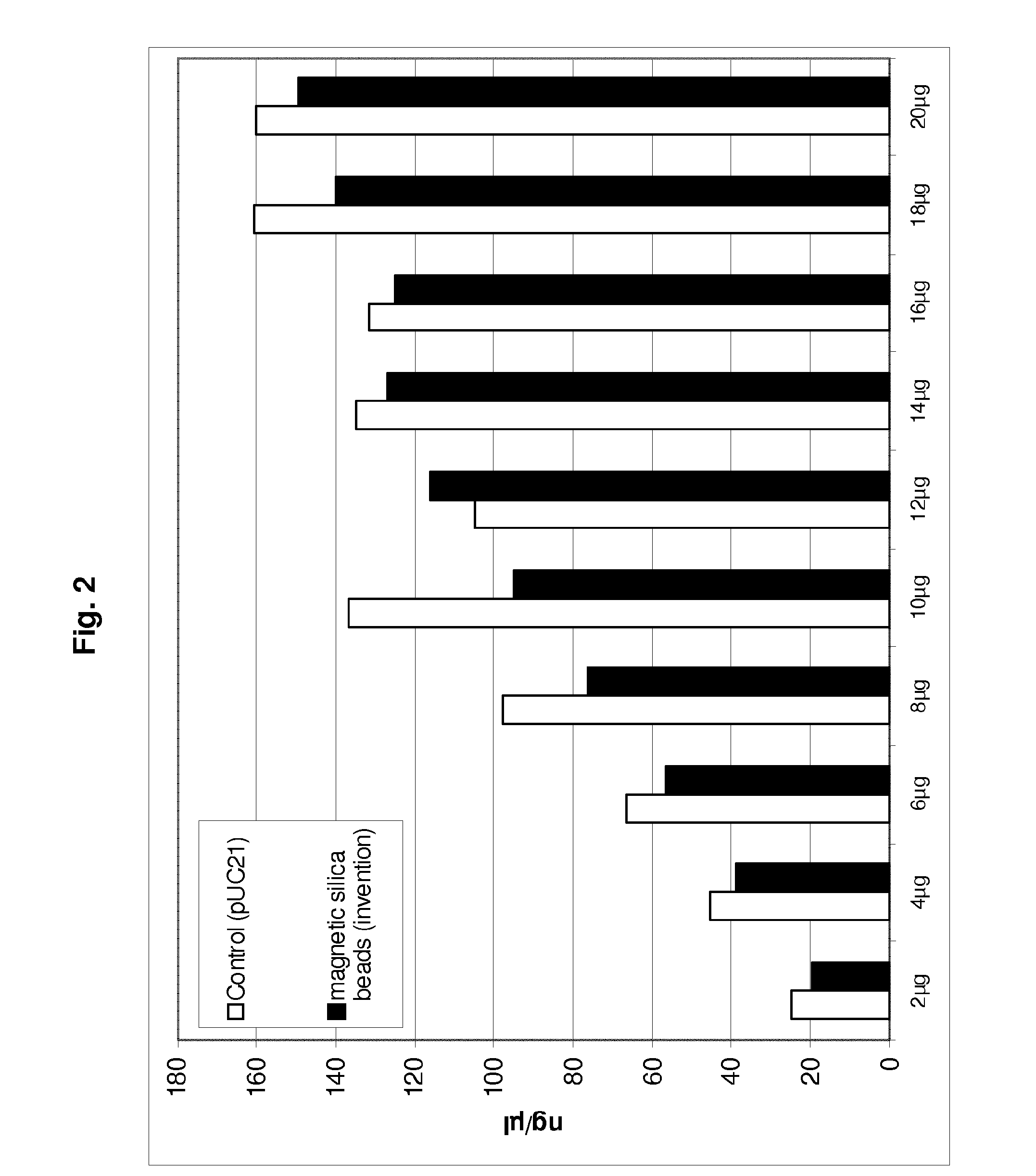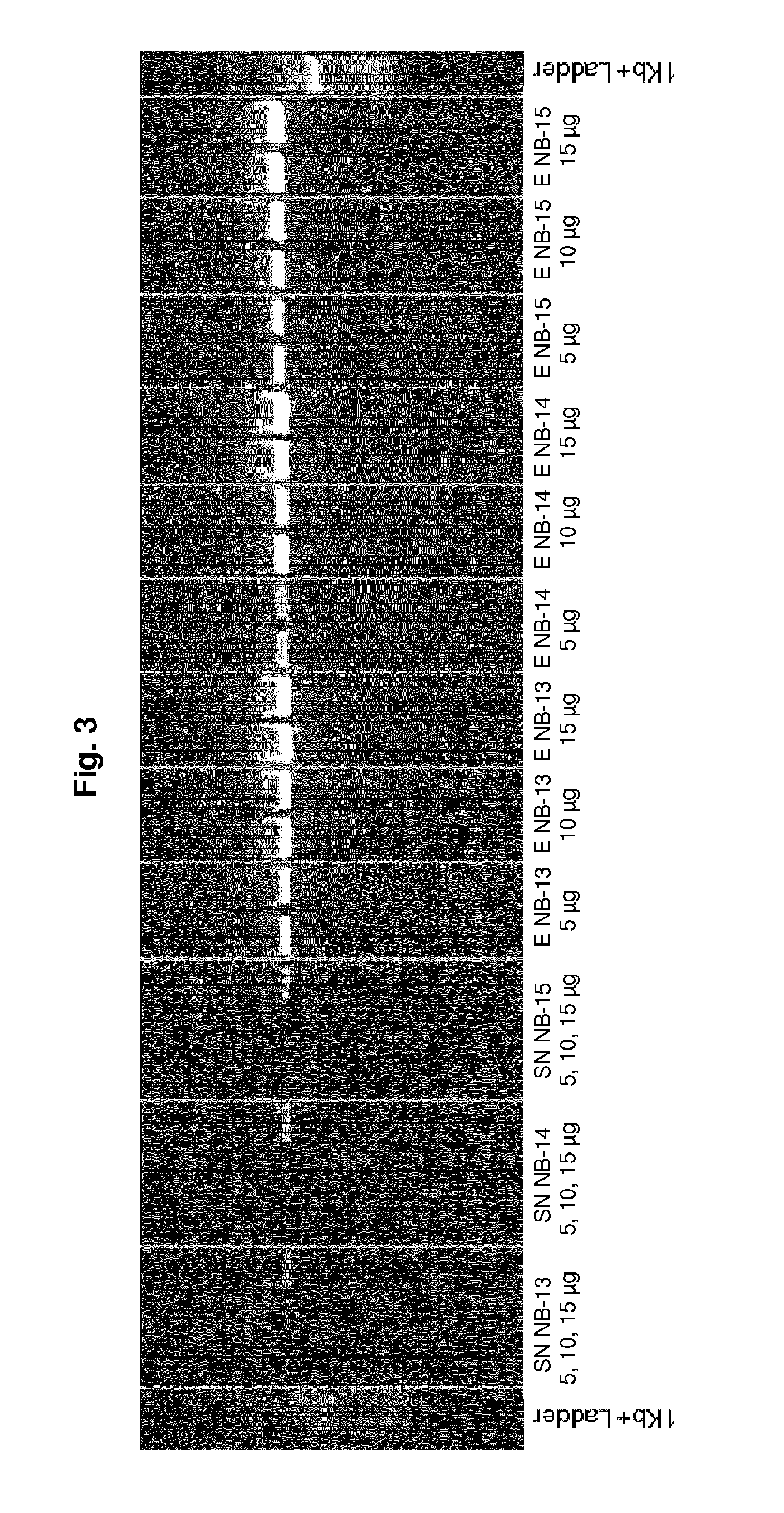Preparation of silica particles
a technology of silica particles and silica powder, which is applied in the field of preparation of porous silica particles, can solve the problems of high maintenance large particle diameters, and high cost of spray dryers, and achieve excellent adsorption characteristics
- Summary
- Abstract
- Description
- Claims
- Application Information
AI Technical Summary
Benefits of technology
Problems solved by technology
Method used
Image
Examples
example 1
One-Step-Preparation of Magnetic Silica Particles
[0139]14 liters of process water are placed in a 20 liter double-wall reactor provided with a paddle mixer, thoroughly flushed with nitrogen and suspended with 228 g KOH under stirring at 500 rpm. By continuously stirring at 500 rpm an argon flushed mixture containing 2×109.5 g iron(III)chloride hexahydrate (Sigma Aldrich, Art. no. 44944) and 2×40.32 g iron(II)chloride tetrahydrate (Sigma Aldrich, Art. no. 44939) in a volume of 2×600 ml deionised water are added and further stirred for 2 hours at 150 rpm under nitrogen supply. Afterwards, 15 g sodium citrate monohydrate (Sigma Aldrich, Art. no. 71402) and 15 ml potassium silicate solution (KaSil, Cognis AG, today BASF: Art. no. 1700) are added and stirred for 15 minutes at 250 rpm. Then, 161.2 g potassium hydroxide (Sigma Aldrich, Art. no. 60368), 300 ml potassium silicate solution and 405 ml formamide (Sigma Aldrich, Art. no. 47670) are given to the suspension, and after stopping the...
example 2
Two-Step-Preparation of Magnetic Silica Particles
[0142]1 liter of process water is placed in a dissolver reactor provided with a propeller mixer (VMA Getzmann, Reichshof-Bergneustadt, Germany) and 5 g (related to the Fe3O4 weight) of citrate-stabilised magnetite (e.g. Alfa Aesar, Art. no. 44665) are slowly suspended at 2000 rpm into the solution. While continuously stirring at 2000 rpm, 1 g citric acid monohydrate (Sigma-Aldrich, Art no. 27490) and 1 ml potassium silicate solution are added and the suspension is stirred for further 15 minutes. Afterwards, 13.75 g potassium hydroxide, 25 g potassium silicate solution (KaSil, Cognis AG, today BASF: Art. no. 1700) and 30 g formamide are given to the suspension which is then stirred overnight at 2000 rpm. After 16 and 17 hours 25 ml of the suspension are removed, and the complete reaction mixture is processed after 18 hours. For this purpose, the pH value is determined, 1 liter of process water is added to the bead suspension and furthe...
example 3
Modification of the Magnetic Silica Particles with an Anion Exchanger Surface (Uniform Silanisation)
[0144]500 mg of the bead suspension comprising the silica particles to be modified is removed and pipetted into a 50 ml Falcon tube, washed for four times with 10 ml of deionised water, and the separation of the supernatants is performed after magnetisation for 3 minutes. Then, 5.75 ml deionised water, 750 μl QSP1-buffer (containing 100 mM sodium acetate, pH 5.6) and 30 μl diethylaminopropyl-trimethoxysilane are added. The mixture is thoroughly vortexed and incubated for four hours at a temperature of 95° C. in an Eppendorf-shaker at 1000 rpm. Subsequently, the beads are washed three times with 10 ml deionised water, two times with 10 ml absolute ethanol, and finally three times with 10 ml deionised water. The washing steps are performed by briefly vortexing the beads and removal of the wash solution after about 5 minutes of magnetic separation. The beads are resuspended afterwards in...
PUM
| Property | Measurement | Unit |
|---|---|---|
| diameter | aaaaa | aaaaa |
| pH | aaaaa | aaaaa |
| pH | aaaaa | aaaaa |
Abstract
Description
Claims
Application Information
 Login to View More
Login to View More - R&D
- Intellectual Property
- Life Sciences
- Materials
- Tech Scout
- Unparalleled Data Quality
- Higher Quality Content
- 60% Fewer Hallucinations
Browse by: Latest US Patents, China's latest patents, Technical Efficacy Thesaurus, Application Domain, Technology Topic, Popular Technical Reports.
© 2025 PatSnap. All rights reserved.Legal|Privacy policy|Modern Slavery Act Transparency Statement|Sitemap|About US| Contact US: help@patsnap.com



